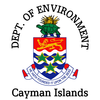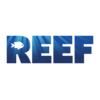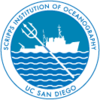Protecting a Caribbean Icon
The Grouper Moon Project is a conservation science partnership between Reef Environmental Education Foundation (REEF) and the Cayman Islands Department of Environment (DoE) with scientists from Scripps Institution of Oceanography at UC San Diego and Oregon State University, aimed at studying Nassau Grouper (Epinephelus striatus) - a social and ecological corner stone of Caribbean's coral reefs.
Key Conservation Success and Outputs
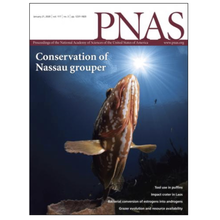
August 2016 - Grouper Moon findings lead to sweeping science-based legislative protections for Nassau Grouper in the Cayman Islands! Read More Here.
Documentaries
September 2019 - "Grouper Moon The Next Phase", a Dr. Guy Harvey Expedition, presents the latest efforts by REEF, the Cayman Department of Environment, and research partners to study and protect the iconic Nassau Grouper. Click here to watch.
July 2012 - "Changing Seas", an informative PBS documentary featuring the research, conservation efforts, and education program of the Grouper Moon Project. Click here to watch.
Recorded Talks
- Scientists from the Grouper Moon Project Team gave a project update at REEF Fest in October 2021 -- Click here to watch on YouTube
- Dr. Brice Semmens, lead Grouper Moon scientist, gave the Keynote Seminar at the 2016 Gulf and Caribbean Fisheries Institute (GCFI) conference. -- Click here to watch on YouTube.
- Dr. Brice Semmens gives lecture on Grouper Moon Project as part of the UCSD's Birch Aquarium 'Perspectives in Ocean Conservation Series' in 2014. -- Click here to watch
Grouper Education Program
- Grouper Education Program - Watch Live-Feed video chats from underwater with Grouper Moon researchers -- visit our YouTube channel to view live streaming and archived sessions.
- Check out the Grouper Education Program EduBlog for timely updates
- Check out the Grouper Education Program webpage for lesson plans and activities, REEF Virtual Field Trips and High School Case Studies, and more.
Other Resources, Articles, and Videos
-
'How to Save a Fish' -- Article featured in Alert Diver
-
Short video about the importance of protecting Nassau grouper spawning aggregations -- Watch the video on You Tube.
-
What is the Grouper Moon Project? -- Listen to a Podcast with project scientist, Dr. Brice Semmens.
-
'Grouper's Last Stand' -- Informative article featured in Sport Diver
- Spawning Videos -- Catalog of underwater footage from the Little Cayman spawning aggregation
What are Nassau Grouper?
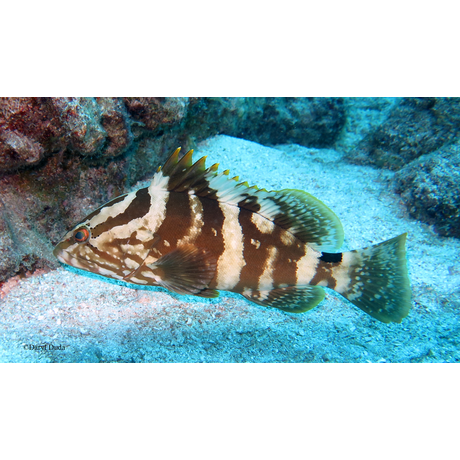
Normally solitary and territorial, during the winter full moons grouper travel, sometimes over great distances, and “group” together to spawn. About fifty of these spawning aggregations sites have been recorded in different places throughout the Caribbean. Historically, once discovered, grouper aggregation sites have become synonymous with fisherman aggregation sites. Due to the timing and site fidelity of the spawning aggregations and the ease with which these relative loners can be caught while congregating by the hundreds and thousands to spawn, one-third to one-half of the known Caribbean aggregation sites are now inactive. The Cayman Islands used to be home to five Nassau Grouper (Epinephelus striatus) spawning sites. Today, four of these sites are dormant or depleted. But one site, on the west end of Little Cayman Island, is home to one of the last great reproductive populations of this endangered species.
Research Components
Since 2002, REEF and the Cayman Islands Department of Environment have fielded research teams each winter to monitor and study the Nassau Grouper spawning aggregations in the Cayman Islands. While efforts are primarily focused on Little Cayman, work has also been done at the aggregations on Cayman Brac and Grand Cayman. The project has grown in scope to include an ambitious acoustic tagging research project, soundscape research, juvenile habitat and genetics studies, oceanographic research, and more. Click here to read more about the various research aspects.
Publications
Over 15 scientific publications have resulted from the Grouper Moon Project. A summary of all scientific papers are given on the Publications Page.
Key publications include:
Stock et al. 2021. Pulse recruitment and recovery of Cayman Islands Nassau Grouper (Epinephelus striatus) spawning aggregations revealed by in situ length-frequency data. ICES Journal of Marine Science. More Details.
Waterhouse et al. 2020. Recovery of critically endangered Nassau Grouper (Epinephelus striatus) in the Cayman Islands following targeted conservation actions. Proceedings of the National Academy of Sciences. More Details.
Heppell et al. 2012. Documenting recovery of a spawning aggregation through size frequency analysis from underwater laser calipers measurements. Biological Conservation. More Details.
Semmens et al. 2007. Charting a Course for Nassau Grouper Recovery in the Caribbean: What We’ve Learned and What We Still Need to Know. 60th Gulf and Caribbean Fisheries Institute Meeting Proceedings. More Details.
Whaylen et al. 2004. Observations of a Nassau Grouper Spawning Aggregation Site In Little Cayman, Including Multi-Species Spawning. Environmental Biology of Fishes. More Details.
Yearly Project Summaries
Click here to read annual summaries of the Grouper Moon research.
Collaborative Team and Major Supporters
The Grouper Moon Project is a collaboration between REEF and the Cayman Islands Department of the Environment, with researchers with Scripps Institution of Oceanography and Oregon State University. Funding is provided by REEF members, Peter Hillenbrand, and several foundations. Many volunteers and others have helped in the field through the years. Generous logistical support is provided every year by Caymanian businesses and locals, especially Little Cayman Beach Resort, Reef Divers, and Southern Cross Club. Visit the Supporters webpage to see a full list.
